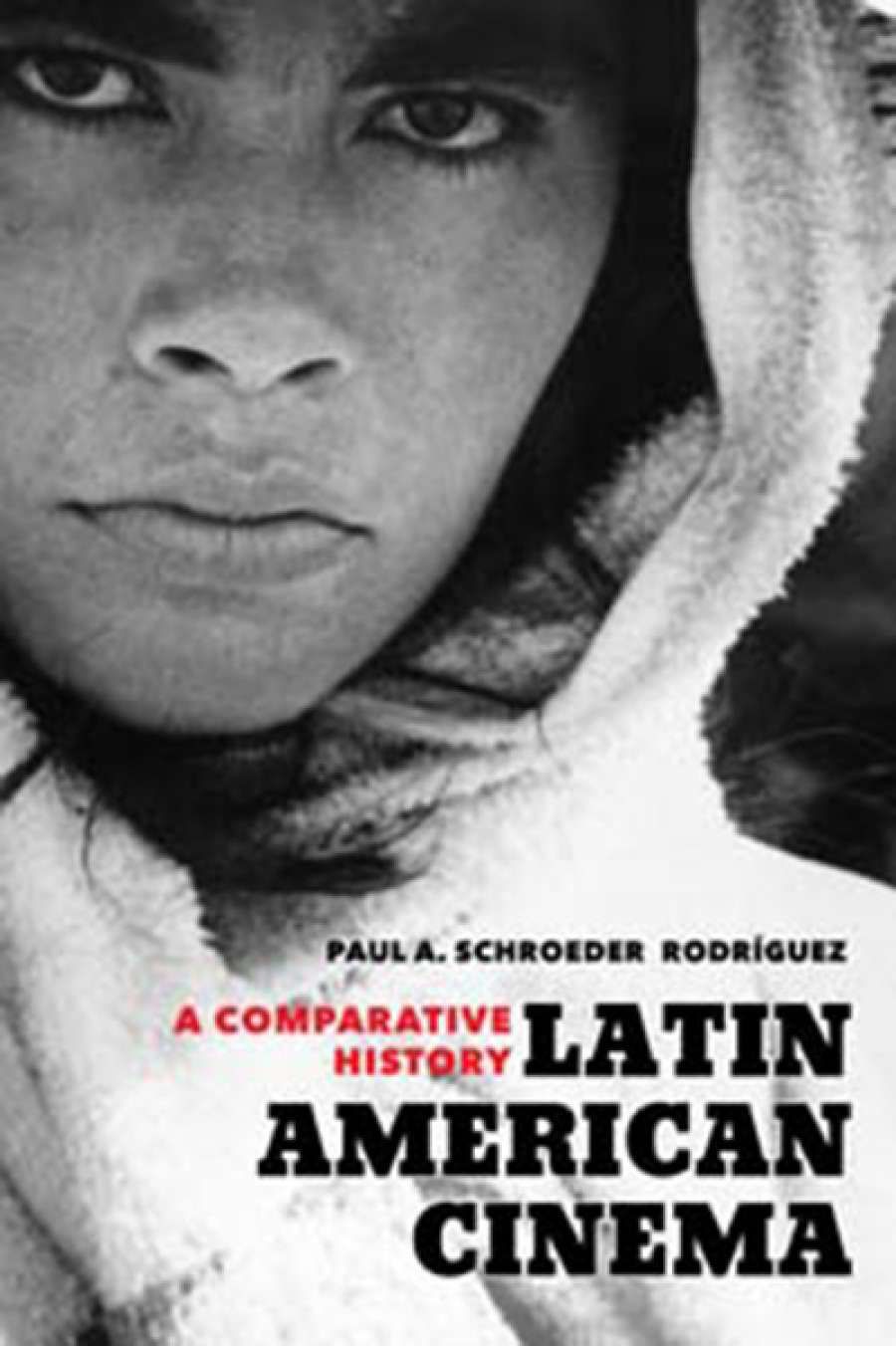
- Free Article: No
- Contents Category: Film
- Custom Article Title: Sarah McDonald reviews 'Latin American Cinema: A Comparative History' by Paul A. Schroeder Rodríguez
- Book 1 Title: Latin American Cinema
- Book 1 Subtitle: A Comparative History
- Book 1 Biblio: University of California Press (Footprint) $71 pb, 376 pp, 9780520288638
Cinema in Latin America, from the technological developments of the silent film era to the stylised international box-office hits of the last two decades, has been caught up in a cyclical struggle of determining its own parameters and negotiating the structural and aesthetic demands created by foreign film industries. Long before we started to conceive of the global as we do today, cinema in Latin America was constantly engaged with and affected by globalisation. Ways of telling stories, at once intensely personal and local, have been increasingly reshaped and retold, responding to and informing global understandings of Latin America.
In his Nobel lecture (8 December 1990), Octavio Paz stated that ‘modernity is a word in search of its meaning’. In reference to the experience of Latin America, Paz details his journey to understanding that modernity is found within, that it is at once traditional and modern, a ‘simultaneous plurality of time and presence’. Schroeder Rodríguez invokes Paz’s call for other forms of ‘cultural periodization’ that respond to the multiple experiences of modernity in Latin America. His approach to contextualising cinema opens up a space in which the multiple participants in the creation of global modernities, from those cultural locations loosely understood as centre and periphery, high and low, European, indigenous, African, are recognised and privileged in their roles as producers in the multiple experiences of modernity in Latin America.
S Octavio Paz (Wikimedia Commons)chroeder Rodríguez takes up the challenge of categorising the cultural periods in Latin American cinema not through a new lens as such but through an old lens focused in a new way, achieving what he himself points to as Paulo Antônio Paranaguá’s call for a new history of Latin American cinema. The comparative approach here serves not to erase the specificities of national experience in favour of some sort of homogenous Pan-American depiction of cinema’s role in Latin America. Rather, it allows a nuanced understanding of the wider ideological developments that underscored the shifts in cinema across the region. It also allows the author eloquently to bring together local, national, and transnational productions in what he refers to as a ‘triangulated’ view of cinema’s trajectory in the region.
Octavio Paz (Wikimedia Commons)chroeder Rodríguez takes up the challenge of categorising the cultural periods in Latin American cinema not through a new lens as such but through an old lens focused in a new way, achieving what he himself points to as Paulo Antônio Paranaguá’s call for a new history of Latin American cinema. The comparative approach here serves not to erase the specificities of national experience in favour of some sort of homogenous Pan-American depiction of cinema’s role in Latin America. Rather, it allows a nuanced understanding of the wider ideological developments that underscored the shifts in cinema across the region. It also allows the author eloquently to bring together local, national, and transnational productions in what he refers to as a ‘triangulated’ view of cinema’s trajectory in the region.
Throughout the book Schroeder Rodríguez works his way through five eras of cinema in Latin America, beginning with the first forays into silent cinema, dividing his attention between the earliest film productions, which he brands as conventional cinema, to the avant-garde productions that were a feature of the latter half of these early years. He then tracks his way through studio cinema (part two), neo-realism and art cinema (part three), the new Latin American cinema (part four) to contemporary cinema (part five). This pathway through the cinema of the region allows the author to engage with the boom and bust cycles of production, the challenges of Hollywood’s role in the marketplace, and the various political and economic catastrophes that, at one moment or another, depending on the nation in question, saw the strengthening of the film industry, or, in the case of Brazil under former President Fernando Collor de Mello, its almost complete destruction. The development of cinema takes place against a backdrop of changing forms or models of modernity shifting from a desire to emulate to one of creative independence. One of the strengths of this book is the author’s ability to draw out the increasing prominence of Latin America as an interlocutor in the creation of global cinematic dialogues, one whose innovation and style influences others, an active producer of global cinematic culture.
At the core of these analyses remains the question of the cinematic invention of Latin America and its representation of various modernities in flux. These representations are about a modernity understood at the local level rather than a response to sweeping one-dimensional understanding of a single modernity for a nation or region. The understanding of cinema in this book responds to the realities of the global era but grounds this understanding in the local, the personal, a modernity defined from within.


Comments powered by CComment